After three decades the tried and tested Class 404 tenders to the end of their useful life. In a dramatically changed environment the planned successors as far as possible can be used in a variety of ways.
The future of tenders has begun with the Medium Support Unit. The future units will fulfil the current requirements of the German Navy for a needs-based supply, support and command unit at sea in a comprehensive and future-proof manner. The basic capabilities of these units are the supply and support of boat formations together with the possibility of enabling formation command at Commander Task Group level through an embarked staff. In addition, the multifunctional design with an adaptable flex deck in conjunction with a roll-on roll-off capability means that soldiers, including vehicles from the sea battalion, can be deployed quickly and safely. Alternatively, the worldwide transport and deployment of special and specialised forces is possible, An internal stern ramp including a slip device ensures that the boats can be launched and picked up quickly. The ability to transport patients on a larger scale rounds off the enormous range of possible operations. The ability to serve as a floating command platform for unmanned systems - in the air, on the water and underwater - is also pioneering. This will make current and future capabilities of unmanned systems available worldwide from the sea in areas such as reconnaissance, communication and combat.
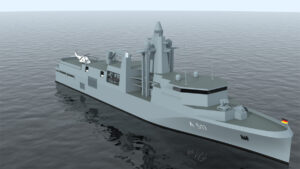
range of possible applications, graphic: Bw
This broad, future-proof capability profile is made possible by a well thought-out design that has been agreed with both experts and people from the field, whereby a huge range of different technology has been accommodated in an extremely compact ship design. The German Navy recognised the need to significantly increase the endurance of boats by providing supply and support via tenders as early as the end of the 1950s. Since the early 1960s, a total of 13 tenders have been put into service, eight as Rhine class (class 401) for the speedboat squadrons, three as class 402 for the minesweepers and two as class 403 to support the submarines. The boats had a displacement of almost 3,000 tonnes with a length of 100 metres and, with a maximum speed of 21 knots, were not only particularly fast, but also exceptionally well armed for the time with two 100-millimetre naval guns and four 40-millimetre single naval mounts including fire control radar systems. At the beginning of the 1990s, these units were replaced by six Class 404 tenders. Here, too, the main tasks were supplying and supporting boat units. As a floating "petrol station", for supplying maritime forces at sea with fuel, fresh water, provisions, spare parts and ammunition, as a floating "workshop", for maintenance and repair work and through the embarked system support groups for the boats to be supported, they fulfilled their tasks consistently and reliably. Over time, one tender, the Main, was converted into a submarine support unit in order to provide the submarine units with customised assistance. With a boat length of 100 metres and a displacement of around 3300 tonnes, the Class 404 tenders have comparable dimensions to their predecessors. The intended operational areas in the Baltic Sea also initially remained the same. This changed after the turn of the millennium with increasingly frequent deployments in the Mediterranean and far beyond, for example in the Horn of Africa. The new areas of operation were accompanied by new tasks such as commanding formations. In order to optimise the technical preparation of the tenders for their extended tasks, the focus was on improving communication and command capabilities in addition to shipbuilding aspects.
Proven concept with limits
A key conceptual feature of the Class 404 tender is its high degree of flexibility in terms of its ability to accommodate different equipment and personnel. For example, 20-foot containers can be stacked in two layers on twelve bays and carried in a single layer on a further bay. This results in a total material capacity of up to 25 containers on a total of thirteen container slots on board. In this way, a wide variety of materials and equipment are available - from spare parts to special containers equipped with command and control equipment and space for a staff. The personnel capacity results from the ability to accommodate a large number of task-specific personnel. For example, a team of specialists from the system support group can be embarked on board for maintenance and repair work. Or a squadron staff can be taken on board to act as a command platform. With such a flexible set-up, tenders can also fulfil tasks that go beyond pure supply. Examples of this include Operation Enduring Freedom, EU Navfor Med, Unifil and the Standing NATO Maritime Countermeasures Group 2, in which the Class 404 tenders have always provided valuable services.
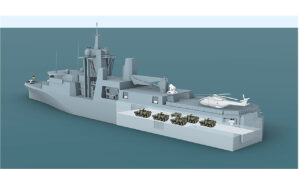
For over 30 years, this flexible design concept with many container spaces and rooms for embarkation personnel has proven its worth. However, the design of the Class 404 tender is already reaching its limits with its limited space and shipbuilding layout. The new, diverse and comprehensive requirements placed on the mid-support unit today can only be met if the proven concept is significantly further developed.
Complexity of the future
The concept of flexibly usable on-board areas and spaces is the key to coping with the new requirements, as there is no alternative to its basic idea if such comprehensive and diverse tasks are to be fulfilled with a unit that remains compact. In order to be able to transport a large number of soldiers and military vehicles as required, a large, contiguous loading area is needed. The Medium Support Unit will provide this area in future. Sufficient ramps and access openings must also be available so that the vehicles can be quickly loaded and unloaded, with the roll-on roll-off system providing optimal loading and unloading options. In order to protect the vehicles from the adversities of the sea without major preparations, shielded transport inside the boat is required. The interior space provided for this purpose - known as the flex deck or mission deck - is of enormous dimensions and runs continuously over half of the entire unit. This makes it the design-defining core element for meeting the diverse mission requirements. The flex deck forms the basis for being able to cover a large number of the new requirements. Special forces boats can also be stored and carried there. In order to be able to deploy these at sea worldwide, further additions are required for launching and retrieving, such as a boat ramp in the form of a slipway. The space can also be used to transport a large number of containers to transport a wide variety of equipment or materials. The Flexdeck thus spans a wide area to provide the required capabilities. At the same time, it makes the unit future-proof, as future requirements for the storage, transport and use of equipment can also be realised there. In addition to the flex deck, the centre support unit has significant changes in almost all areas compared to the current tenders. The bridge will be considerably larger and has a fully integrated state-of-the-art layout for safe boat handling. The increasing importance of command and control capabilities is reflected on the one hand in the design of the operations centre, which has a large number of workstations that can be used flexibly. On the other hand, equipment for communication and data exchange is implemented in line with requirements. Server rooms are already future-proof thanks to their generous dimensions - which also applies to energy supply and air conditioning. And the large number of meeting rooms with a wide range of IT and network equipment emphasises the need to provide optimum equipment for management tasks. The design of the patient transport capability is no less complex, as in addition to the layout of the rooms, aspects of the optimum transport routes and rescue routes also have to be accommodated in the ship design. The design of areas intended for the future use of unmanned drones poses a particular challenge. In this respect, necessary design decisions must already be made today with regard to such reception capacities. Space, energy supply, command and control equipment, IT security, take-off and landing options, launch and pick-up options are just some of the factors that need to be considered. A key focus in the reorganisation of the Medium Support Unit is the increased capability for self-protection. Its importance is emphasised by recent experiences such as the drone attacks on ships in the Red Sea. At close range, a more powerful tube weapon with the option of using air-burst ammunition, including for drone defence, is planned. The issue of cross-sectional equipment in the navy will play a key role in the selection of weapons. There are also plans to integrate the tried-and-tested missile-based short-range defence system RAM to combat agile targets such as guided missiles or aircraft.
The topics listed so far describe only part of the complexity that needs to be taken into account with the future of the tender - the middle support unit - and addressed in order to find a solution. However, a purely technical view falls far short of the mark. Topics such as the design of the supply maturity with aspects of training and familiarisation, the provision of all necessary documents for the logistical support of the units in the Bundeswehr-specific and SASPF-bound environment, the design of maintenance through to questions of IT security with all its facets from radiation security to accreditation must be dealt with comprehensively and in the context of complex regulations. In addition, the procurement process must be organised. Managing tasks such as planning and coordinating the project with regard to approvals, assessments of industrial services, acceptances and commissioning requires resources that are essential for the future of tenders. And the focus must already be on utilisation today, because procurement lays the foundations for optimally functioning utilisation, be it in the design of framework agreements for maintenance or the needs-based planning of technical-logistical support services. The future of tenders has begun. The first technical solution ideas have taken shape and show that the many new requirements of the German Navy can be met with a compact and future-proof ship design. The large number of new requirements is accompanied by a significant increase in the complexity of the centre support unit. If the future of tenders in the form of the Medium Support Unit is to be a success, all aspects of procurement and subsequent utilisation must be considered and addressed today. If fast and smooth procurement is to work, all aspects of the project - and not just the ship design - must be considered.
Technical Government Director Gunther Brückner is Head of the Task Force Supply, Tender and Medium Support Unit Division at the Federal Office of Bundeswehr Equipment, Information Technology and In-Service Support.
Gunther Brückner
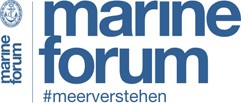
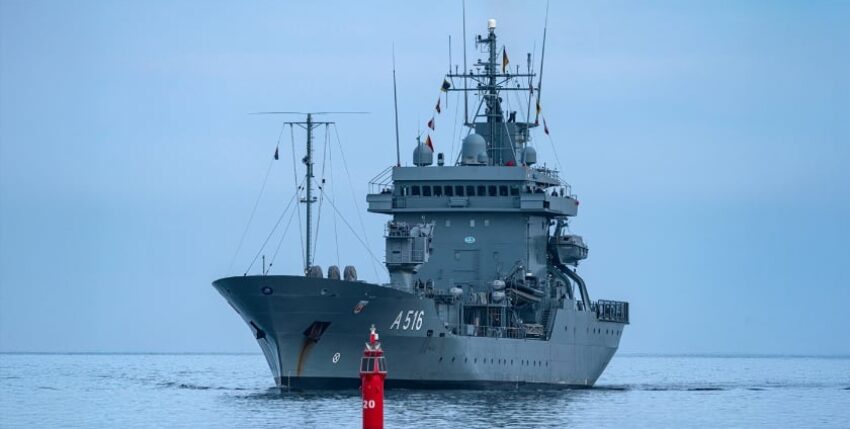







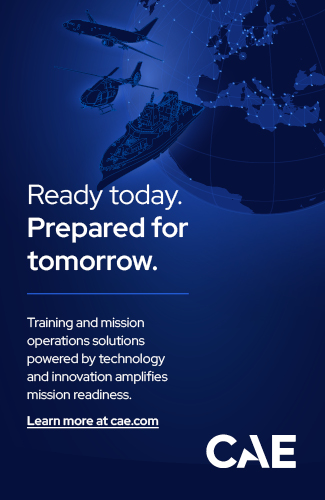
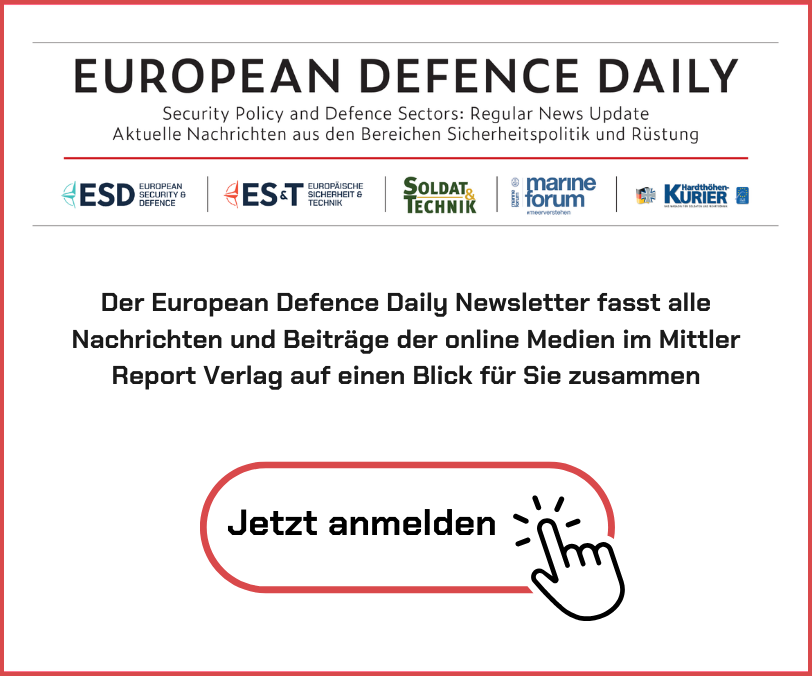
One Response
The idea of procuring a somewhat larger number of medium-sized ships instead of a few large amphibious platforms (Arche Naumann, ETrUS, JSS and whatever they were all called) is a real step forward. Nevertheless, they will still be quite large vehicles which, in view of their many innovative approaches, entail completely different requirements than the operation of a tender.